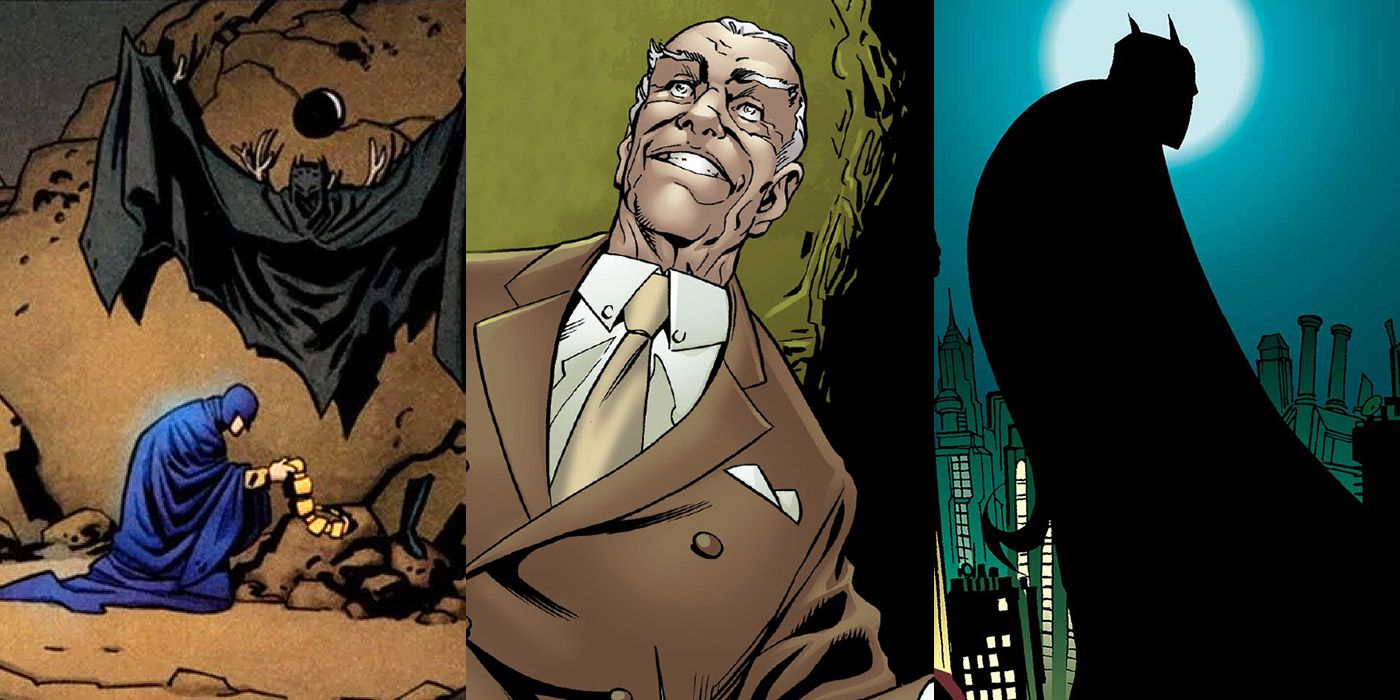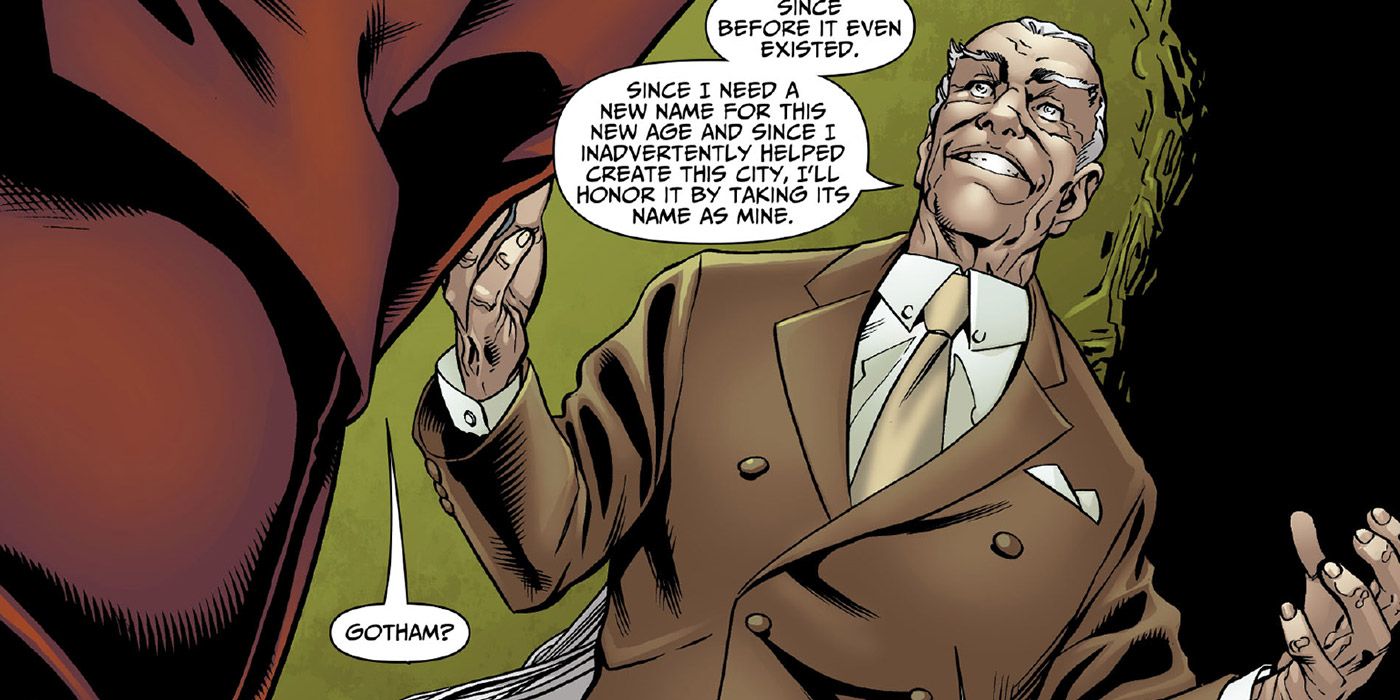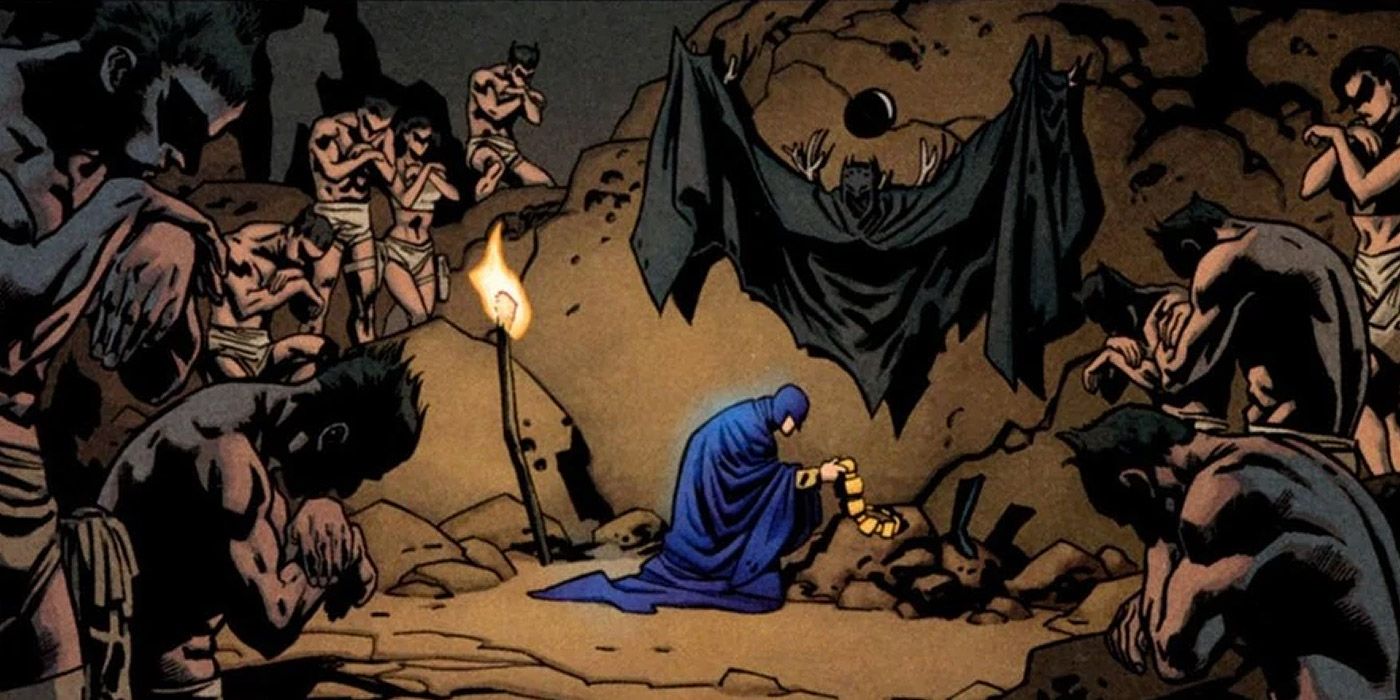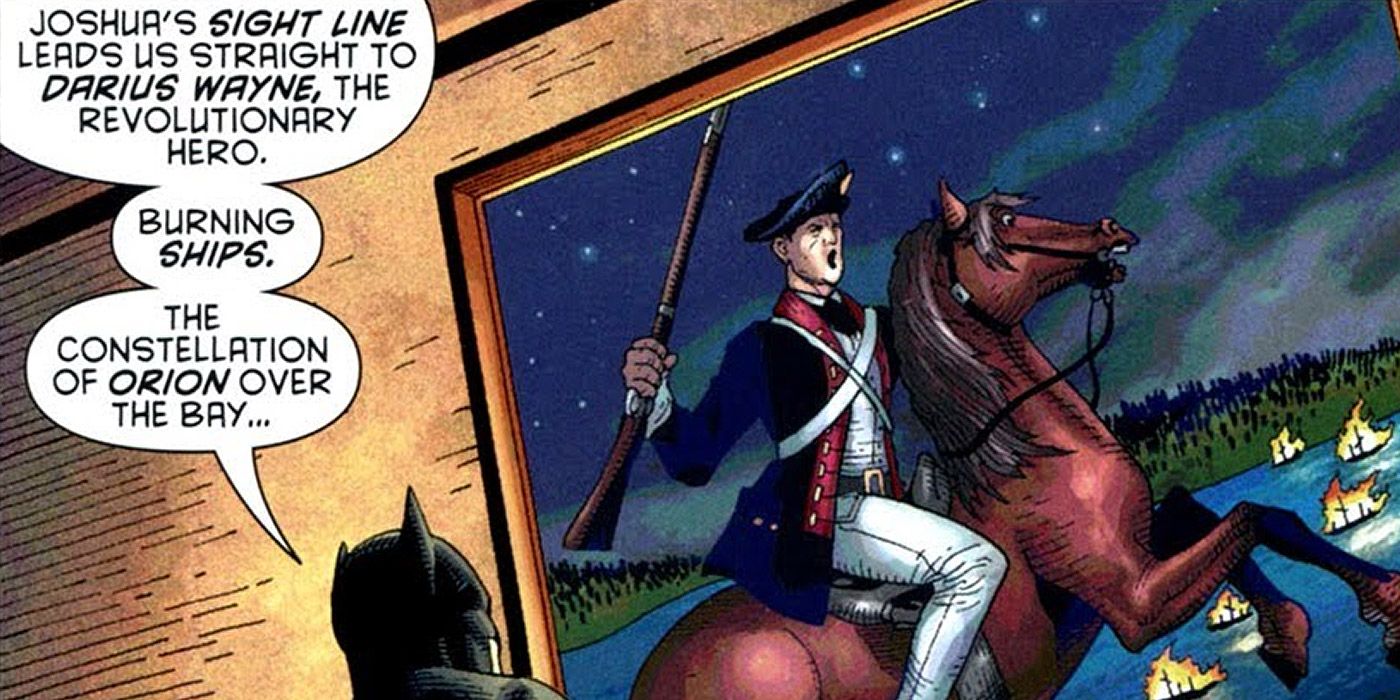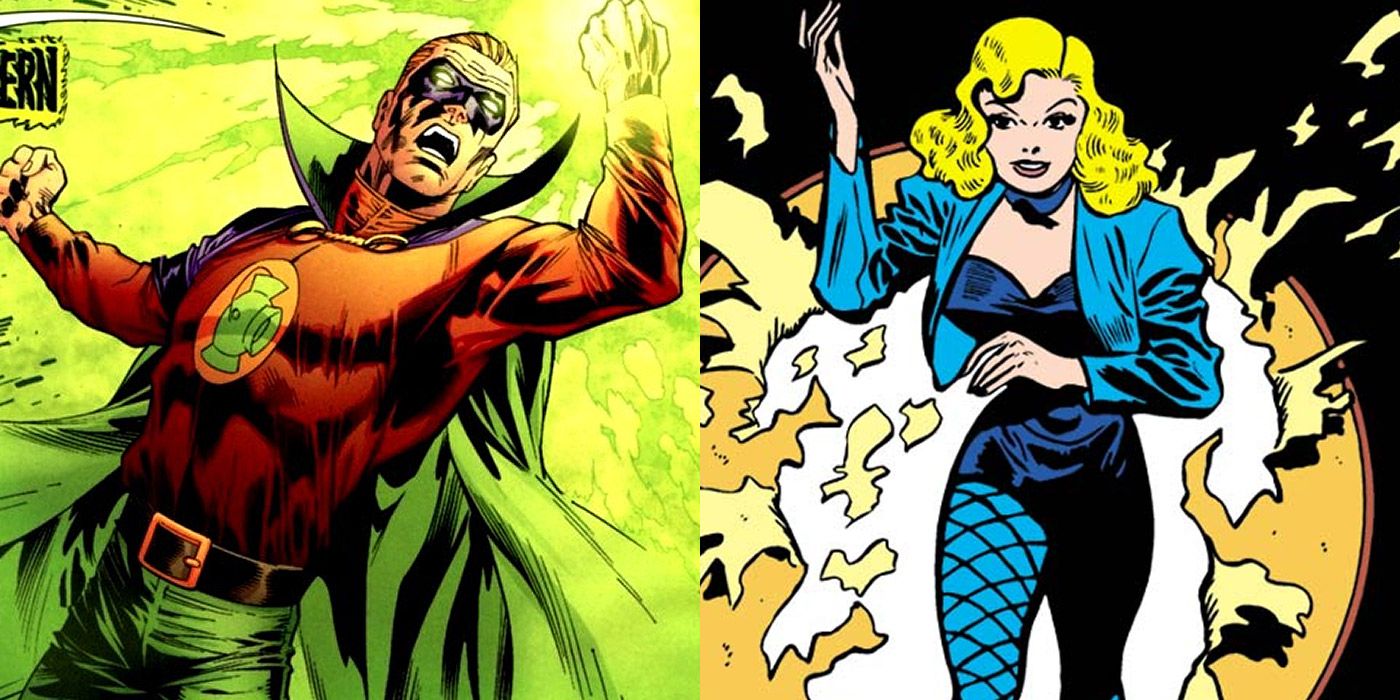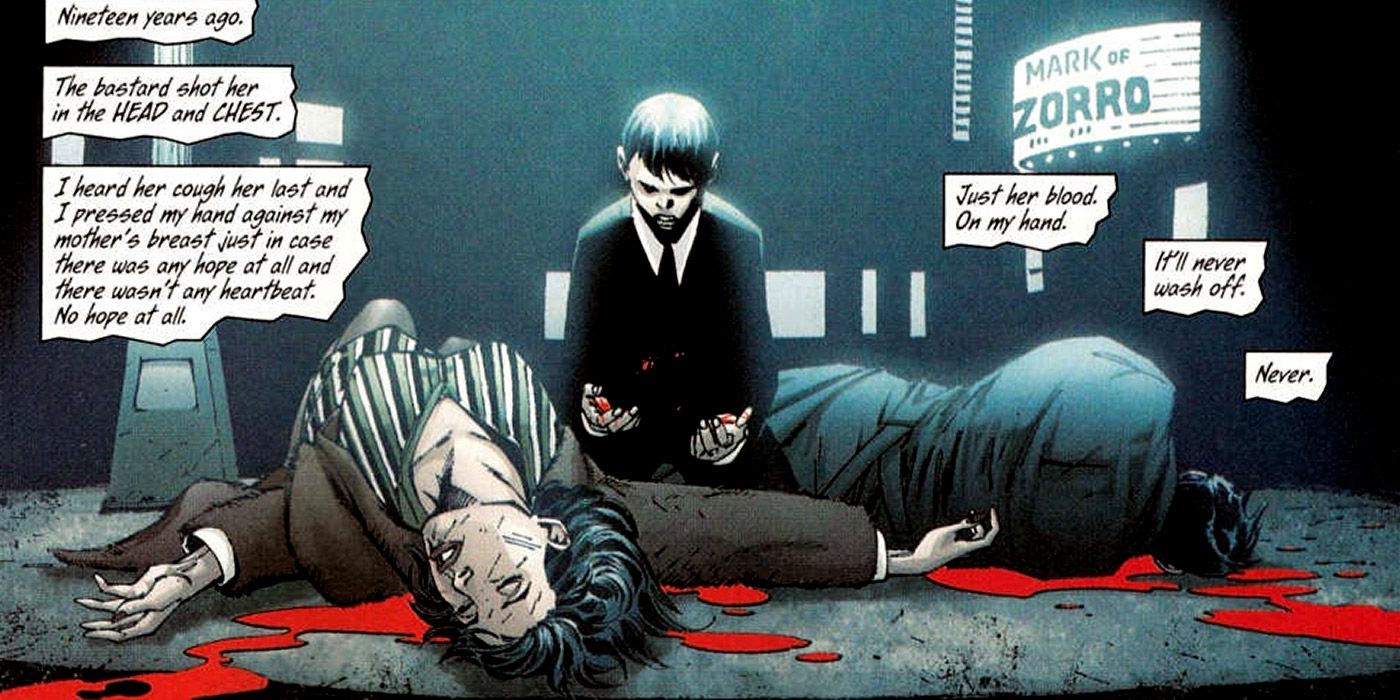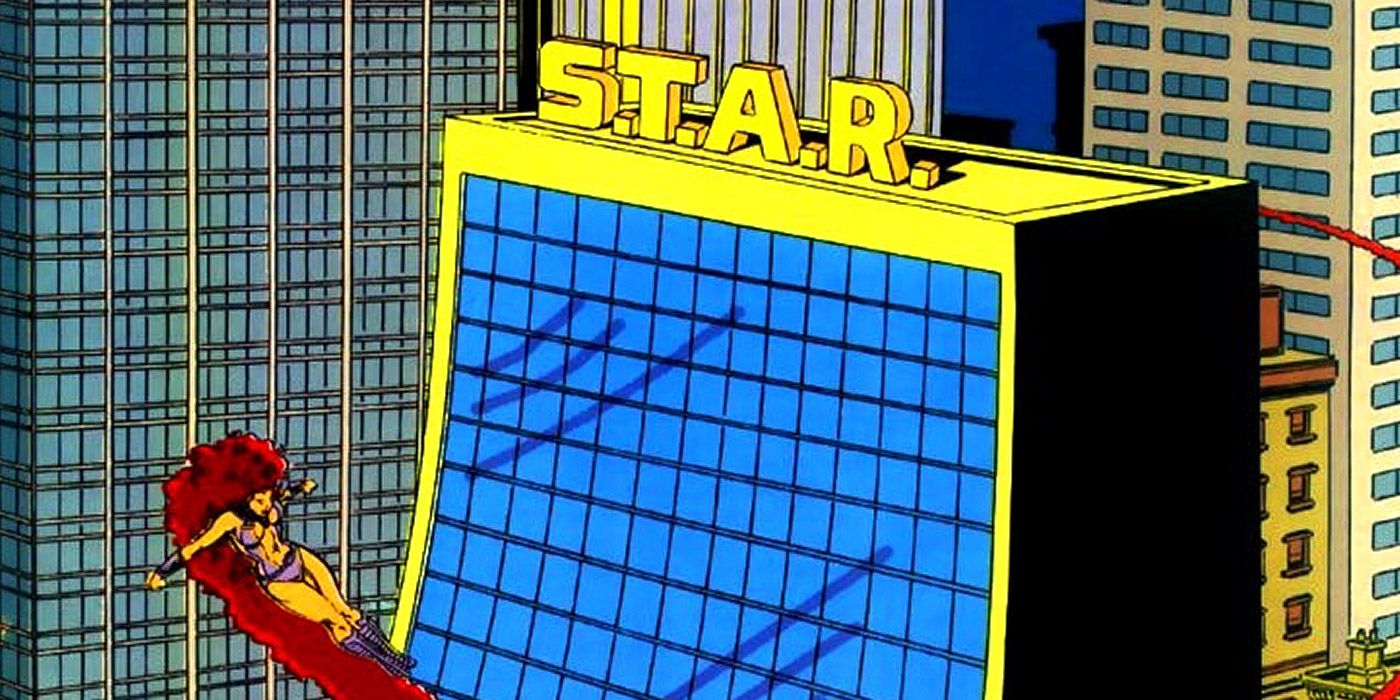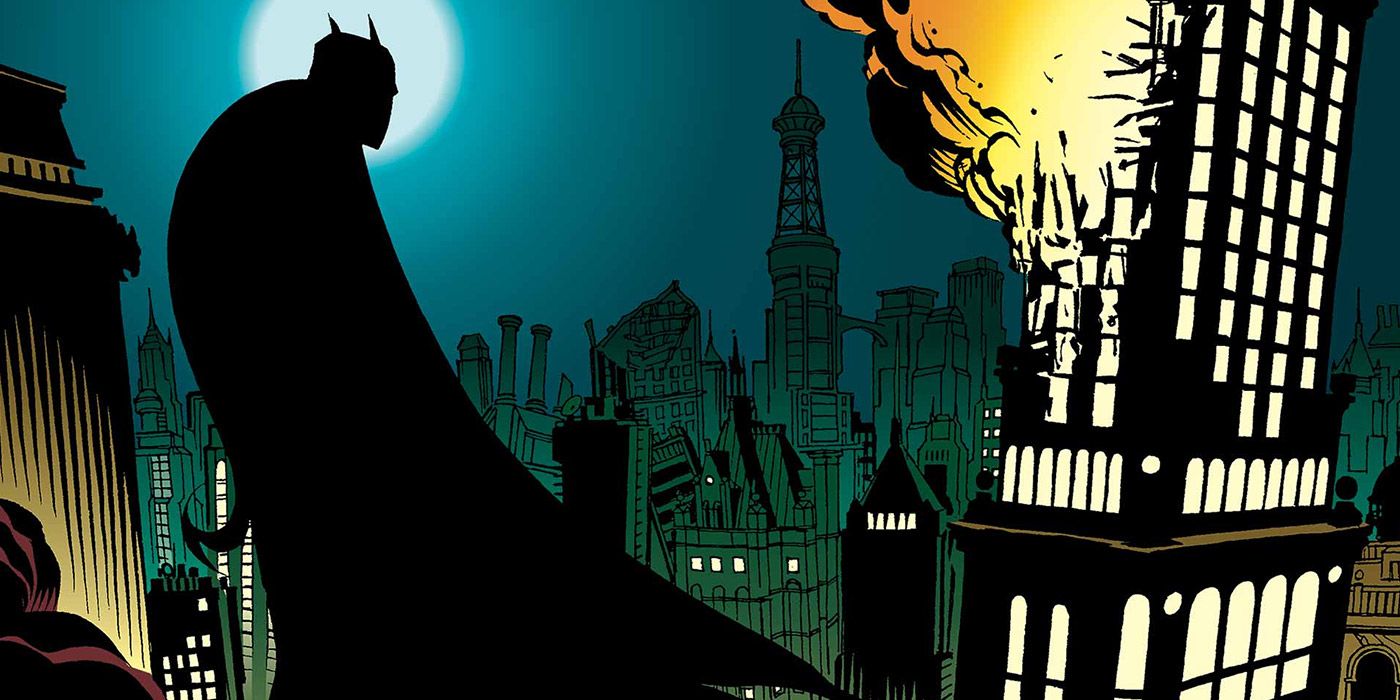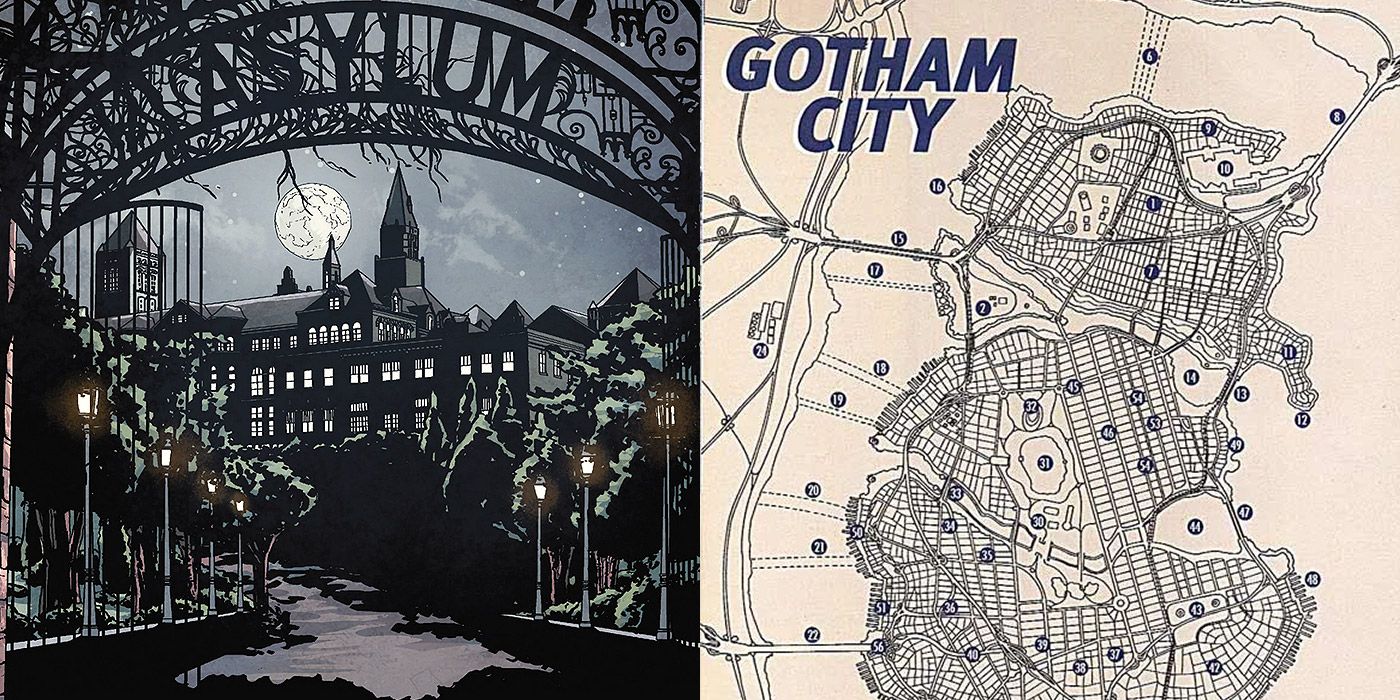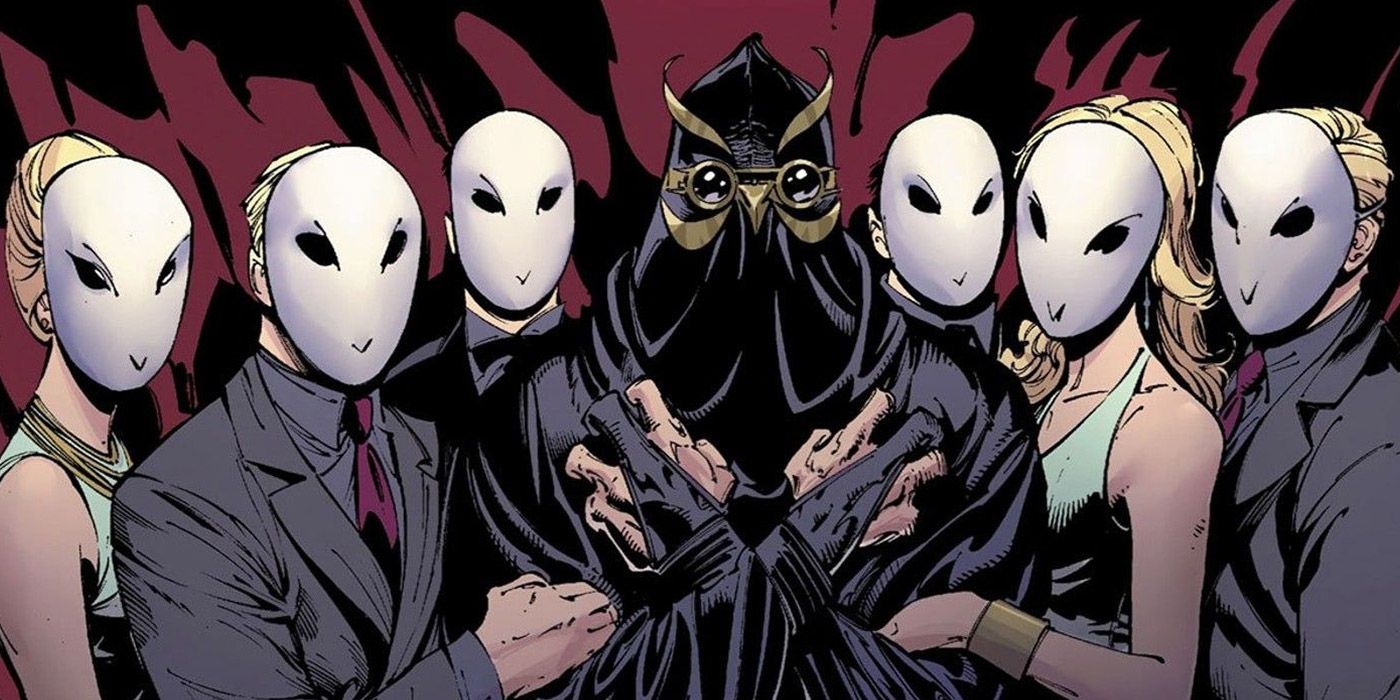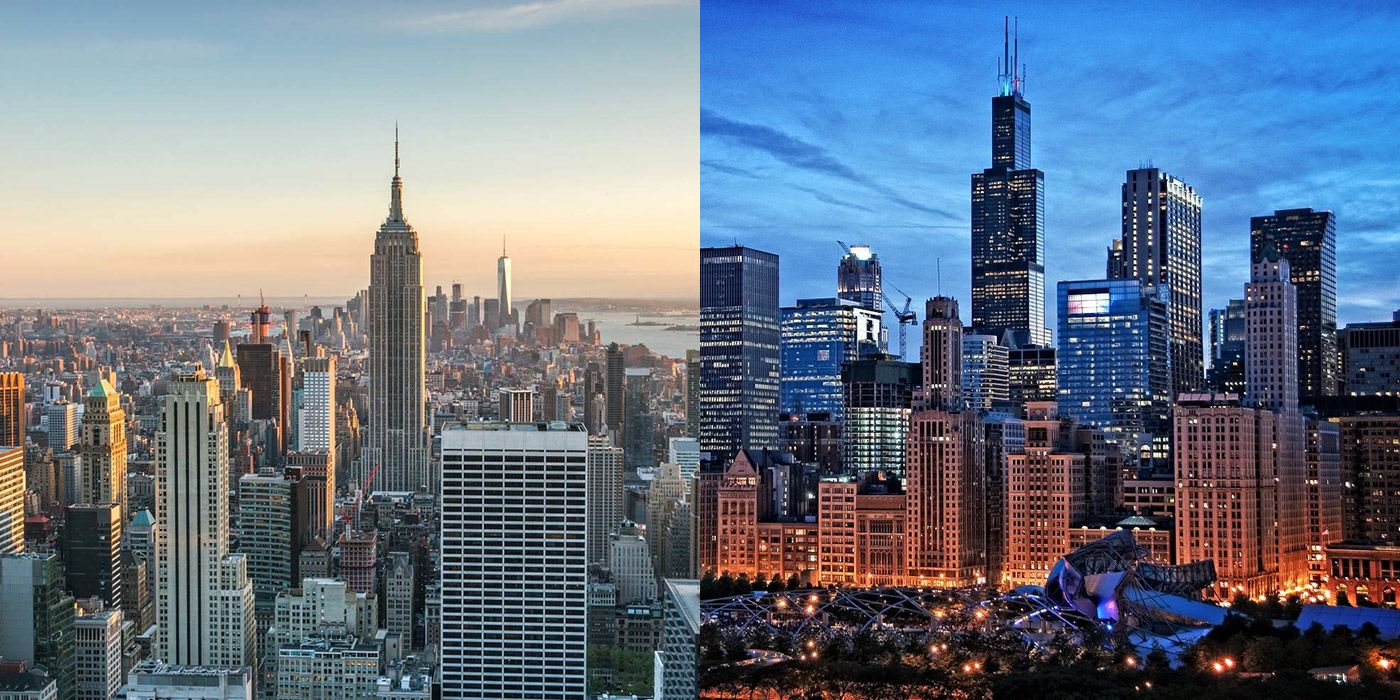Few fictional comic book cities are as notorious as Gotham City, where Batman makes his nightly rounds beating criminals and supervillains to a pulp. The city is rife with corruption that can swallow up even the most stalwart of heroes, and turns regular citizens into vicious criminals with little more than a nudge.
There's a lot that the average Batman fan doesn't know about this bleak and ominous city, from its early origins to the kinds of trials and tribulations it has faced over the decades. There's more to Gotham than just steel girders and gargoyles, and its true legacy lies in the gritty details buried in the pages of DC Comics.
Early Doctor Gotham Origins
Gotham City is renowned as a hotbed of criminal activity that seems endless. It's a deep quagmire of negativity that attracts some of the most evil villains in the Batman comics. Shadowpact #5 gave some insight into why this might be, and it's an interesting origin for Gotham City as a whole.
The story revolves around a mad warlock calling himself Doctor Gotham. Centuries ago, he was buried and imprisoned on the site of what is now modern Gotham City, and his evil energies seeped outwards, corrupting the minds of residents. This amplified the natural criminal inclinations of the evil, creating the sewer of evil that the city is so well known for.
The Miagani Connection
Another reason for Gotham's endless supply of criminal activity might be tied to an ancient bat-worshipping people known as the Miagani, who inhabited the land around Gotham for millennia. Stories were told of a powerful shaman named Blackfire who tried to take control of the Miagani for his own evil ends.
The people revolted, sealing Blackfire in a cave. As the legend goes, he escaped from his confines and used his powers to ruin the surrounding land, forcing the Miagani out. It's possible that this played some role in the "curse" of Gotham City that would follow.
The Earliest Waynes
The Wayne family had a hand in the rise of Gotham from a small port town to a bustling metropolis, and it began way back in 1799 with Darius Wayne. It was he who erected the now-famous Wayne Manor, home not only to Bruce Wayne but his alter-ego, the Batman.
In 1840, Solomon Wayne and an architect known as Cyrus Pinkney helped lay the groundwork for Gotham's urban growth. It was Pinkney who was largely responsible for the look and feel of Gotham; a city with menacing gargoyles, thick walls, and other striking iconography that helped distinguish it from other American cities of the time. The Waynes literally made what Gotham was and, with Bruce as Batman, continue to shape the look, feel, and legacy of the city.
The First Superheroes In Gotham
Some may think that Batman was the first superhero ever to stalk the rooftops of Gotham, but that's not the case. In fact, superheroes had made the city their home in days past, including the very first Green Lantern, Alan Scott. Coincidentally, he would later become President of the Gotham Broadcasting Company.
Dinah Drake Lance, aka the Black Canary, was also a resident of Gotham in its older days. She made the city her base of operations and joined the Justice Society of America to battle the criminal underworld. Yet neither of them was able to overcome the sheer amount of crime in the city, setting the stage for a certain Caped Crusader to appear and change the way Gotham was policed.
Park Row's Descent Into Crime Alley
Park Row started out as a rather affluent low-crime neighborhood, but it soon descended into an economic juxtaposition between the rich and poor. With it came an increase in crime which resulted in the murder of Bruce Wayne's parents when he was just a young boy.
The area was nicknamed "Crime Alley," and quickly became one of the most notorious neighborhoods in the city. Many supervillains used it as a staging ground before it was eventually cleaned up and turned around with increased police presence.
S.T.A.R. Labs Operates In Gotham
Although S.T.A.R. Labs is most commonly associated with the CW's popular yet flawed Flash series, its comic book origins are far more diverse. The corporation is known for attracting a ton of talent across multiple DC Comics properties and is closely tied to characters like Cyborg, from where he gets all of his cybernetic parts.
While CW fans might think S.T.A.R. Labs operates primarily out of Central City, the truth is that it has different branches all over the United States, and the rest of the world. Gotham City houses its own S.T.A.R. Labs branch specifically tied to weapons-based R&D and is the main competitor to Wayne Enterprises, which develops its own technology under the watchful eye of Lucius Fox.
The Cataclysm That Toppled The City
Those who don't follow the comic books probably aren't aware of a major event that literally shook Gotham City to its core. Referred to as the Cataclysm, this 7.6 earthquake was so bad that Gotham City was razed to the ground, causing an economic and governmental collapse.
The United States government officially declared Gotham as a No Man's Land, quarantining it from the rest of the country. It was Lex Luthor who later presided over the rebuilding, giving the city a fighting second chance to start over and rejoin the rest of the United States. This storyline was loosely adapted by Christopher Nolan in the final chapter of his Dark Knight trilogy, The Dark Knight Rises.
Notable Locales In Gotham City
While many Batman fans may already be aware of the notorious Arkham Asylum and Blackgate Penitentiary, there are other locales that are mentioned far less but deserve scrutiny. The Penguin's Iceberg Lounge, the ever-shifting Shadowcrest mansion, and the notorious Slaughter Swamp are all key locations around the city that have been the locations for Batman's numerous battles with Killer Croc and other members of his rogues gallery.
Less ominous locales include the Gotham Zoo, Public Library, Cathedral, and Natural History Museum that are all staples of a functioning city. The main aerial hub is the Archie Goodwin International Airport, which has seen its fair share of action over the years, including an attack by the Penguin using a flock of killer birds.
The Court Of Owls Has Deep Ties To Gotham
Recently, Batman has had to contend with the mysterious crime syndicate known as the Court of Owls. This ancient order has its roots in Gotham's past and has survived through the ages via a combination of secrecy and intimidation tactics designed to keep followers in line.
The Court has a deep resentment towards the Wayne family, particularly Alan Wayne, the founder of Wayne Enterprises. As the story goes, Alan Wayne met his demise at the hands of one of the Court's Talons, a secret cabal of undead assassins tasked with taking out its rivals. The Court of Owls continues to bedevil Gotham's heroes and are set to be the main antagonist in the forthcoming Gotham Knights video game.
Behind The Scenes Influences
Several real-world American cities have been alluded to be the equivalent of Gotham City, the first being New York City. In the Batman: Knightfall novel, DC writer Dennis O'Neil described Gotham as "Manhattan below Fourteenth Street at eleven minutes past midnight, on the coldest night in November."
In a Today article titled Dark Knight's Kind of Town: Gotham City, DC artist Neal Adams compared Gotham City to Chicago during the crime-ridden 1940s mobster era. Tim Burton's 1989 film version of Batman memorably portrayed Gotham City as a character unto itself, with the kind of Gothic architecture rarely glimpsed in American cities. Whatever the inspiration, Gotham City stands as one of fiction's most recognizable and memorable cities.

